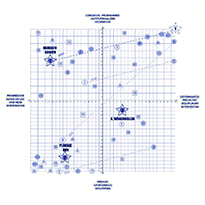The radicality of use
Practices of transformation based on the occupation and appropriation of buildings.
Abstract
This article aims to explore radicalism in contemporary architecture through an analysis of spatial transformation practices grounded in the use of space, particularly observed in the collective occupation and appropriation of disused buildings. Unlike traditional architecture, which relies on abstract, preconfigured representational tools, these tactics emerge as spontaneous, bottom-up approaches, highlighting the effectiveness of group actions in reprogramming spaces. Adopting a qualitative methodology that includes direct observation, participant interviews, and document analysis, this study examines three European cases of building occupation, where space transformation is driven by its active use. The success of these interventions demonstrates that occupation and appropriation are now being utilised as positive tactics to repurpose underutilised resources and challenge the established spatial order. These approaches, in themselves, become tools for questioning predetermined normative spaces, revealing a spatiality that emerges from the grassroots, while reaffirming social dynamics and group identity as fundamental in place-making. By focusing on experience and presence, these group efforts transform and reprogramme spaces without requiring significant material interventions, compelling the inclusion of social and symbolic dimensions in the analysis of spatial transformation. The evidence highlights the radical potential of these varied spatial productions, demonstrating the continued relevance of use and practices as an alternative means of making architecture.
Downloads

Downloads
Published
How to Cite
Issue
Section
License
Copyright (c) 2024 Roberto Juan Cardini

This work is licensed under a Creative Commons Attribution 4.0 International License.
The authors keep their rights upon their work, although they transfer, in a non-exclusive way, the rights of exploitation (reproduction, publication, distribution, public dissemination and presentation) to the Journal. The authors are, therefore, free to enter additional, separate contracts for the non-exclusive distribution of the version of the work published in the Journal (for instance, by hosting in an institutional repository or publication in a book), provided credit is given that the work was initially published in this journal. The works are published under a Creative Commons Attribution 4.0 (CC BY 4.0) license.











